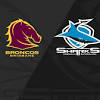Michael Nesmith Dead: Monkees Singer, Songwriter and Guitarist Was 78 – The Hollywood Reporter

Michael Nesmith, the guitar-playing singer-songwriter with the wool hat who along with Davy Jones, Peter Tork and Micky Dolenz became a TV star and 1960s pop sensation as a member of The Monkees, has died. He was 78.
Nesmith died Friday of natural causes in Carmel Valley, California, his family said in a statement.
“With Infinite Love we announce that Michael Nesmith has passed away this morning in his home, surrounded by family, peacefully and of natural causes,” they said. He had undergone quadruple bypass surgery in 2018.
A Texan whose mother invented Liquid Paper, the Grammy winner also founded a multimedia company through which he created the prototype for MTV and produced several films, most notably the 1984 cult classic Repo Man.
Nesmith was 24 and an up-and-coming musician getting noticed for penning such tunes as “Different Drum” — recorded in 1967 by the Linda Ronstadt-led Stone Poneys — when he was cast as one of the four carefree youngsters living in a California beach house looking to make it in the music world on NBC’s The Monkees.
The brainchild of producers Bob Rafelson and Bert Schneider, the comedy was designed to cash in on the popularity of The Beatles by mirroring the zaniness of Help! and A Hard Day’s Night. An immediate hit upon its September 1966 debut, it won the Emmy for outstanding comedy series after its first season and became a pop culture phenomenon.
“The Monkees was the first TV show that had only young people in the lead, with no ‘adult’ figure in sight (no parent, no manager),” Gwen Ihnat wrote in a 2016 article for The A.V. Club. “It was also unusual that the four didn’t have any character names but essentially played themselves: Mike the older leader, Davy the heartthrob, Micky the wacky cutup and Peter the childlike innocent.”
Dubbed the “Prefab Four,” The Monkees each received $400 a week for the show. Nesmith got in after answering an ad in the trades. “Madness!! Auditions,” read a blurb published Sept. 8, 1965. “Folk & Roll Musicians for acting roles in a new TV series. Running parts for 4 insane boys age 17-21.”
Nearly 450 aspiring actor-musicians tried out. Nesmith won over producers with his nonchalant demeanor. He also was very funny — so much so that after test audiences didn’t connect with the pilot, the producers added his and Jones’ screen test, and approval ratings soared.
There’s another reason Nesmith might have gotten the gig: he rode a motorcycle. To keep his hair out of his face, he wore a green wool hat. That look on a sunny California day made an impression during his audition.
Producers intended on calling his character “Wool Hat,” but Nesmith hated that idea. Schneider and Rafelson agreed to call him Mike but insisted he keep the hat.
Realizing the series could be a record-selling gold mine, the show’s production company, Screen Gems, featured two songs in each episode. Three Monkees singles — “I’m a Believer,” “Last Train to Clarksville” and “Daydream Believer” — made it to No. 1, as did their first four albums — The Monkees, More of the Monkees, Headquarters and Pisces, Aquarius, Capricorn & Jones Ltd.
In 1967, The Monkees, Nesmith said, outsold The Beatles and Rolling Stones, combined. They had a record four No. 1 albums that year, and some sources back him up, but he backtracked on that claim years later.
Music producer Don Kirshner ran the recording sessions, chose the songs and solicited tunes from the likes of Neil Diamond, Carole King & Gerry Goffin, Neil Sedaka & Carole Bayer Sager and Tommy Boyce & Bobby Hart. The Monkees sang, but others played the instruments.
This irked Nesmith, the group’s most accomplished musician; he thought The Monkees could become a real band had they been given the opportunity. He would lead the charge to give the boys a bigger say.

The series ended in March 1968 after its second season, but The Monkees took a final on-screen bow with Head (1968). Written by Rafelson (who also directed) and Jack Nicholson, the counterculture film was purportedly conceived during an LSD- and pot-fueled weekend.
Head was intended to be an edgy satire that poked fun at war, Hollywood phoniness and The Monkees themselves, but it was a box office disaster. “They work very hard and they aren’t any good,” Renata Adler wrote in her review for The New York Times.
The soundtrack was equally disappointing. Head peaked at No. 45 — the first time a Monkees LP had failed to break the top five.
“We all were — very tired — and the show was starting to repeat itself,” Nesmith said in a 2018 interview. “Things like The Monkees show have a specific lifetime, and when it’s through, it is through, left for history to assess.”
Robert Michael Nesmith was born in Houston on Dec. 30, 1942. His parents, Warren and Bette, divorced when he was 4, and Nesmith moved with his mother to Dallas. His mom did office work to make ends meet, but that all changed in 1951 when she came up with the idea for Liquid Paper (originally called “Mistake Out”).
She used the product to build a multimillion-dollar company before selling it to Gillette in 1979 for $49 million but died of a stroke shortly after, leaving half of her fortune to her son.
After two years in the U.S. Air Force, where he earned his GED, Nesmith enrolled in San Antonio College, but he was most interested in writing songs and playing guitar. He and another aspiring musician, John Kuehne, began performing together and headed to Los Angeles to try to break into the music business.
In 1963, Nesmith recorded his first single, “Wanderin’,” followed in 1965 by other songs released under the name Michael Blessing.
Meanwhile, Frankie Laine recorded Nesmith’s “Pretty Little Princess” in 1965, The Paul Butterfield Blues Band included his “Mary, Mary” on its 1966 album, East-West, and The Stone Poneys released a version of his “Some of Shelly’s Blues” in 1968.
Nesmith’s “Papa Gene’s Blues” and “Sweet Young Thing” (co-written with King and Goffin) were featured on the first Monkees album, while their second LP included “Mary, Mary” and another song he wrote, “The Kind of Girl I Could Love.” But it was Kirshner calling the shots, and that angered Nesmith.
As detailed in Randi L. Massingill’s 2005 book, Total Control: The Mike Nesmith Story, Kirshner unveiled his pick for The Monkees’ next single during a 1967 party inside his bungalow at the Beverly Hills Hotel. When Nesmith objected, Screen Gems attorney Herb Moelis defended Kirshner’s track record. Nesmith retorted that The Monkees could record “Happy Birthday” with a beat and it would sell a million copies. If he didn’t get a bigger say in the band’s music, he would quit.
“Moelis then made the mistake of telling Michael that he had better read his contract,” wrote Massingill. “With that, Michael exploded in anger and WHAM! He put his fist right through the wall of the bungalow. In the midst of the dust and the shock of it all, Michael turned to Moelis and said, ‘That could have been your face, motherfucker.'”
Schneider agreed to give The Monkees control of the B-side of each single, but when Kirshner broke the deal with the very next release, he was gone. Going forward, The Monkees, led by Nesmith, had complete control of their music.
In 1969, Nesmith bought out his Monkees contract at considerable expense to join Kuehne, drummer John Ware and pedal steel guitarist Red Rhodes in Michael Nesmith & the First National Band. They released three albums, enjoying minor successes with the singles “Joanne” and “Silver Moon,” both written by Nesmith, before disbanding in 1971.
In 1974, Nesmith founded Pacific Arts Productions, which distributed his solo albums and promoted such artists as Kaleidoscope, Fresh and Pacific Steel Company.
He began creating videos around his songs, most notably 1977’s “Rio,” and approached Warner Communications with the idea for a TV series featuring music videos. From that, Popclips was born, and it ran for six episodes on Nickelodeon in 1980. (Howie Mandel was among the veejays on the show.)
John Lack, the Warner executive overseeing the project, thought the program would work better as a cable channel, and Popclips would become MTV. Lack wanted Nesmith to run it, but he declined, more interested in creating content than being a TV executive.
His biggest direct-to-video success was 1981’s Elephant Parts, a wacky lineup of comedy parodies weaved around videos of five Nesmith songs. A hourlong product for VHS, it won Nesmith a Grammy for Video of the Year. (He spoke with David Letterman in 1983 about the project.)
Pacific Arts also dabbled in features. In addition to Repo Man (which featured a cameo by Nesmith as a rabbi), the company produced Timerider: The Adventure of Lyle Swann (1982), which Nesmith co-wrote, Square Dance (1987) and Tapeheads (1988).
Seeking to expand its library, Pacific Arts reached a deal to acquire the home video rights to the PBS library; after the network reneged, Nesmith sued and won a $47 million settlement.
Nesmith returned to the comedy/music video format in 1985 with Television Parts, a lively summer series featuring performances by Jerry Seinfeld, Jay Leno, Whoopi Goldberg and Garry Shandling.
In 1986, Nesmith joined Jones, Dolenz and Tork during the encore of a Greek Theatre concert that marked The Monkees’ 20th anniversary. He later appeared as Santa Claus in a Monkees MTV video, performed with his bandmates at the Universal Amphitheatre and was there when The Monkees received a star on the Hollywood Walk of Fame in 1989.

A year after Nesmith was nominated for a Grammy for best new age album for 1994’s The Garden, The Monkees reunited with Justus, its first studio album since Head. Nesmith then wrote and directed Hey, Hey, It’s the Monkees, an hourlong special that blended interviews with videos of Justus songs.
After Jones’ sudden death in 2012, Nesmith joined Dolenz and Tork for a U.S. tour. And after Tork died in 2019, he and Dolenz toured this year.
On Twitter, Dolenz wrote: “I’m heartbroken. I’ve lost a dear friend and partner. I’m so grateful that we could spend the last couple of months together doing what we loved best — singing, laughing and doing shtick. I’ll miss it all so much. Especially the shtick. Rest in peace, Nez.”
Nesmith was married and divorced three times. Survivors include his children, Christian, Jonathan, Jason and Jessica.
“Monkees fans … are a joy to perform for, and I particularly enjoyed channeling ‘Monkee Mike,'” Nesmith said in 2013. “It was a lot of fun when I was a kid — and it has its charm for me even now. The four of us were discussing going out and playing when David died. That was a real surprise — very unexpected — and it seemed that if we were ever going to do it, we should do it now. Each of us had his own agenda with the tour, I think, but mine was to give the fans another pass at their Monkees — which for many was a big part of their childhood — and to perform the songs.”


 New Zealand
New Zealand Argentina
Argentina  Australia
Australia  Austria
Austria  Brazil
Brazil  Canada
Canada  Chile
Chile  Czechia
Czechia  France
France  Germany
Germany  Greece
Greece  Italy
Italy  Mexico
Mexico  Nigeria
Nigeria  Norway
Norway  Poland
Poland  Portugal
Portugal  Sweden
Sweden  Switzerland
Switzerland  United Kingdom
United Kingdom  United States
United States 
























